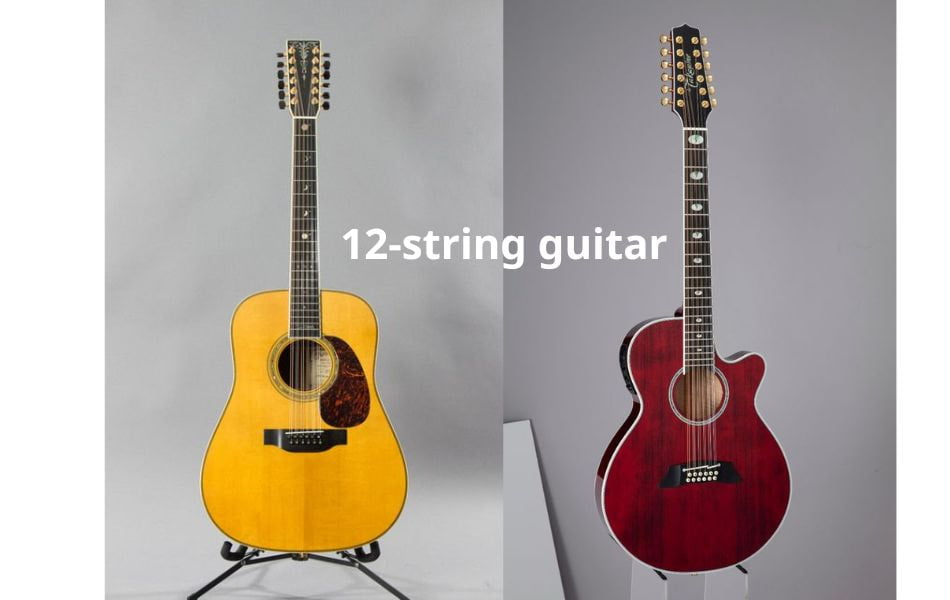12-String Guitar Standard Tuning
Tuning plays a crucial role in your guitar learning journey. 12-String guitar standard tuning can be particularly challenging for those exploring this instrument. With twice the number of strings compared to a standard guitar, along with the choices of gauge and tuning techniques, it can pose difficulties for players. However, fret not, as the forthcoming article aims to address all your queries and provide guidance for mastering this unique instrument.
12-string guitar standard tuning techniques
Process tuning
To ensure the best sound and feel of the guitar, make sure the strings are in the correct structure and position. The strings are typically arranged in pairs, tuned to the same note, and balanced in tension. The highest string (usually E) is placed at the top, and the lowest string (usually G) is positioned at the bottom.
The 12-string guitar standard tuning is E, A, D, G, and B. Each course's top two strings (thinnest) are tuned to the same pitch, and the bottom two strings (thickest) of each course are tuned one octave lower than the top two.
After tuning the lower octave strings, move on to tuning each pair's higher octave strings (thinner ones) to match the pitch of the already-tuned lower strings.

Using app
Guitar Tunio is an accuracy tuner app for smartphones that eliminates the need for cables! With just your smartphone's microphone and speaker, you can conveniently tune your guitar on the go. Our feature-rich guitar tuner offers two tuning modes: Manual and Auto.
In Manual mode, tuning your guitar is a breeze. Just select the string you want to tune on the app's user-friendly tuning screen, and Guitar Tunio will generate a realistic guitar tone at the exact pitch for that string. It's like having a professional tuner right in your pocket!
Prefer a more hands-free approach? Our Auto mode has got you covered. Simply pluck any string on your guitar, and Guitar Tunio will automatically detect the string you're trying to tune. Effortlessly switch between these modes with the intuitive toggle button for a seamless tuning experience.

Crucial reminder for selecting strings on twelve-string guitar
Light Gauge
Light strings, typically with lower gauge numbers, help to balance the overall tension on the neck. With 12-string guitar standard tuning, there can be a significant stress on the neck, and choosing lighter gauge strings aids in maintaining playability and reducing the risk of damage.
Balanced Tension
Seek strings with balanced tension, where the difference in tension between the strings is not too drastic. This ensures that the guitar remains in balance when switching between different tunings, reducing the risk of neck warping.
Material Quality
Opt for strings from reputable brands made of high-quality materials such as steel, copper, or phosphor bronze. Quality strings not only enhance the sound but also have a longer lifespan, saving you time and money on regular string changes.

String Coating
Consider using coated strings if possible. The coating protects the strings from dirt, sweat, and oils, preventing corrosion and preserving the sound quality. Coated strings are especially beneficial if you play frequently or in humid environments.
The above is not only true for 12-string guitar tuning, but it is also true for 7-string guitar tuning or 8-string tuning. You can refer and apply if you are interested in the above guitars
12-string guitar standard tuning requires knowledge and technique. So make sure you have enough knowledge to be able to choose a suitable guitar. Satisfying all the required techniques, you will surely soon become a real guitarist.








